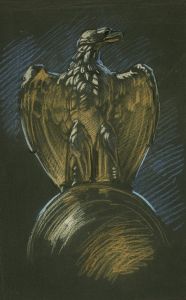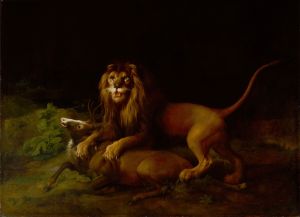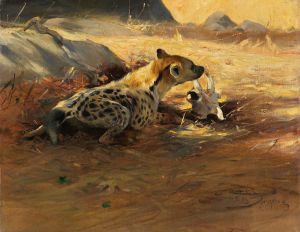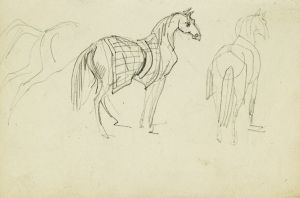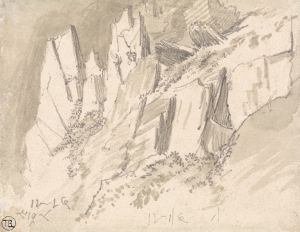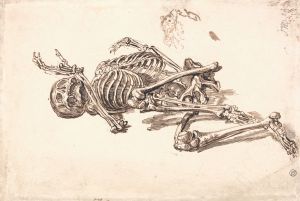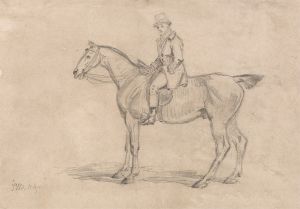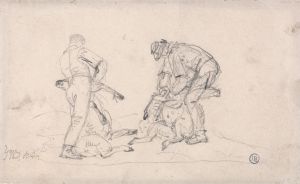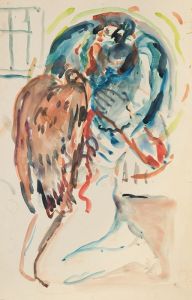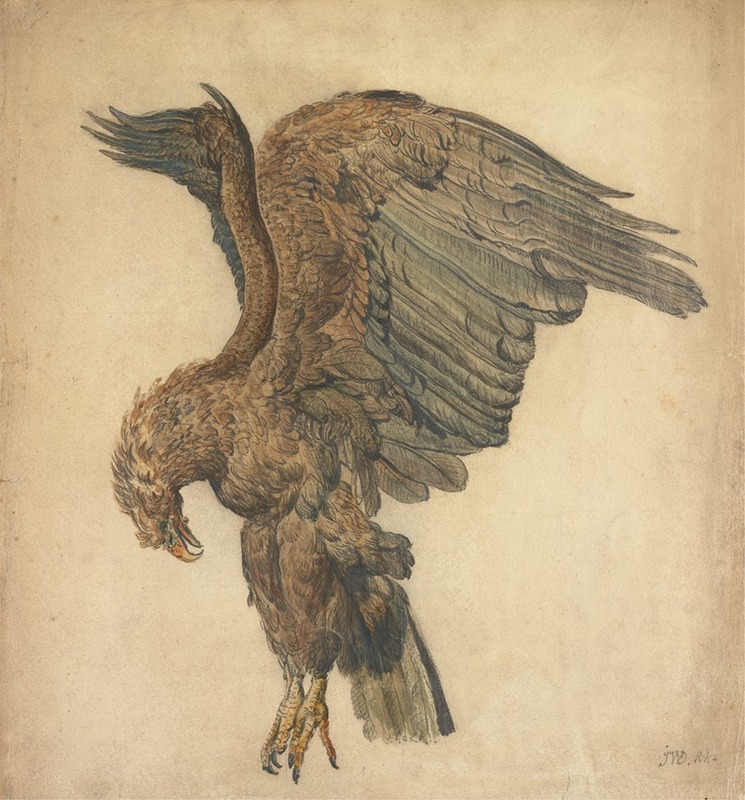
Study of a Plunging Eagle
A hand-painted replica of James Ward’s masterpiece Study of a Plunging Eagle, meticulously crafted by professional artists to capture the true essence of the original. Each piece is created with museum-quality canvas and rare mineral pigments, carefully painted by experienced artists with delicate brushstrokes and rich, layered colors to perfectly recreate the texture of the original artwork. Unlike machine-printed reproductions, this hand-painted version brings the painting to life, infused with the artist’s emotions and skill in every stroke. Whether for personal collection or home decoration, it instantly elevates the artistic atmosphere of any space.
James Ward's "Study of a Plunging Eagle" is an evocative artwork that showcases the artist's profound skill in capturing the dynamism and majesty of wildlife. James Ward (1769–1859) was a prominent English painter and engraver, renowned for his animal paintings and landscapes. His works are celebrated for their attention to detail and the ability to convey the vitality and spirit of the subjects.
"Study of a Plunging Eagle" exemplifies Ward's mastery in depicting animals with both anatomical precision and emotional intensity. The painting portrays an eagle in mid-dive, capturing the moment with a sense of movement and power. This study likely served as a preparatory work or an exploration of the eagle's form and motion, which was a common practice among artists seeking to understand their subjects deeply before committing to larger compositions.
Ward's interest in animal subjects was influenced by his brother-in-law, George Morland, a successful painter known for his rustic scenes and animal depictions. Ward's career was further shaped by his work as an engraver, which honed his skills in detail and texture, elements that are evident in his paintings. His fascination with animals is also attributed to the Romantic movement, which emphasized the beauty and power of nature, a theme that resonated with Ward and his contemporaries.
The eagle, as a subject, symbolizes strength, freedom, and majesty, qualities that Ward captures through his dynamic composition and meticulous attention to the bird's anatomy. The painting reflects Ward's ability to infuse his work with a sense of life and energy, characteristics that made his animal studies particularly compelling.
Throughout his career, Ward received numerous commissions and accolades, becoming an associate of the Royal Academy in 1807 and a full member in 1811. His works were widely exhibited and admired for their technical skill and emotive power. "Study of a Plunging Eagle" fits within this context as an example of Ward's dedication to capturing the essence of his subjects.
While specific details about the creation and history of "Study of a Plunging Eagle" may not be extensively documented, the painting remains a testament to Ward's artistic legacy. His contributions to animal painting and his influence on the genre are well recognized, with his works held in various collections, including the Tate Gallery and the British Museum.
In summary, James Ward's "Study of a Plunging Eagle" is a significant piece that highlights the artist's expertise in animal depiction and his ability to convey the dynamic qualities of his subjects. It stands as a representation of Ward's broader body of work, which continues to be appreciated for its artistic and historical value.





